Read Reviews
The Best Corded Electric Strimmers
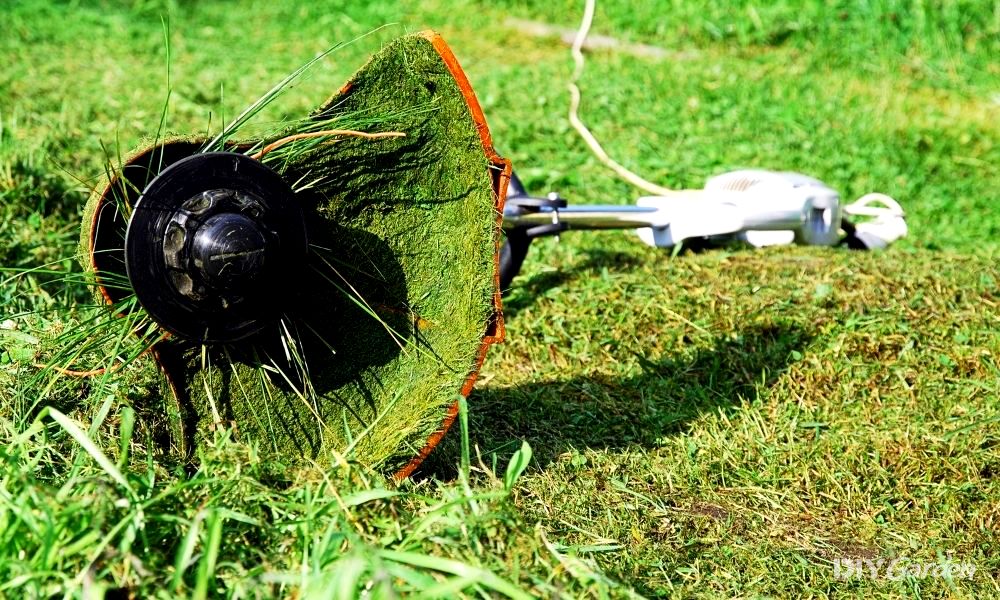
-
Flymo Contour XT Electric Grass Trimmer and Edger
-
Bosch EasyGrassCut 26 UK
-
Ryobi RLT6130 Grass Trimmer
-
Makita UR3000/2 240V Electric Linetrimmer
-
Black + Decker GL9035GB Electric Strimmer
Corded Electric Strimmer Reviews
- Assembly is quick and only takes 5 - 15 minutes
- 10 m power cable is suitable for most small/medium gardens
- Adjustable strimming head angle makes this strimmer versatile for strimming and edging
- It’s very simple to switch between strimming and edge cutting
- Although designed to be quiet, it’s still relatively noisy
- Cable supplied unlikely to be long enough for large gardens
- The line can break easily on contact with harder objects
- Design
- 5
- Performance
- 4
- Ease of Use
- 4
- Safety
- 4.5
- Value for Money
- 5
The Flymo Contour XT Electric Grass Trimmer and Edger offers great value for money and has a very user-friendly design – whether you’ve had a lot of different strimmers in the past, or this is your first venture, it’s simple to use and delivers good results.
Let’s take a look at the design first. This strimmer has a 25 mm cutting width, which is generous without being impractical, and 2-in-1 functionality. Plus, it weighs just 2.8 kg which makes it relatively comfortable to use for long periods of time – though some people may still find it a little heavy. The secondary handle helps with control control, while the 10m power cable means it’s suitable for most average-size gardens.
This strimmer can be used to both trim and edge the lawn – there are separate settings for either task. Switching between the two functions requires a simple press of a button and twist of the cutting head.
In terms of performance, this strimmer ticks a lot of boxes. It has 300 W of power and runs at 10500 RPM. The line is automatically fed through the strimmer when required, saving you from messing about with the spool, although the line may break on contact with thicker vegetation.
According to Flymo, this strimmer is fitted with a 1.5mm ‘silent’ dual auto line, but it’s worth pointing out that customers still report it being quite noisy – so don’t buy this under the false illusion that it won’t make any noise at all.
Nevertheless, noise aside, this strimmer is generally pleasant to use. The lightweight design means it’s easy to manage and the plant guard protects shrubs from damage when trimming close by.
Although it’s not equipped with a huge number of safety features, overall the Flymo Contour XT is still well designed. The handle is ergonomic, and it’s easy to keep the tool steady thanks to the secondary handle. It’s simple to switch between functions, and all parts are durable. The safety switch on the handle means you’ll need to constantly push down to activate the strimmer; if you trip and let go, the strimmer will stop running which is a good feature to have.
This is one of the best corded electric strimmers overall, for a variety of reasons. Not only does it perform well, it’s also light enough to be sufficiently easy to manage. It offers good value for money considering the price, and adjusts well for different tasks.
Did you find this review helpful?
- Very easy to assemble in just a few minutes
- A good choice for standard grass trimming
- Lightweight and easy to manoeuvre
- Inexpensive choice, suitable if you only need to strim grass
- Included cutting line is thin at 1.6 mm and breaks easily - will likely need replacing for thicker grass
- An extension cable will be required in most gardens as the power cord is only 6 m long
- Suitable for grass strimming, but not more heavy-duty jobs
- There is no hook to wrap the lead around to keep it tidy and out of the way
- Design
- 5
- Performance
- 4
- Ease of Use
- 5
- Safety
- 4
- Value for Money
- 5
The Bosch EasyGrassCut 26 UK is the best value strimmer, perfect for gardeners on a tighter budget. This strimmer is well-designed and versatile, suitable for anyone looking to neaten up their lawn without spending a lot on a high-end model.
First, the design. This strimmer is very lightweight, weighing just 1 kg. It’s also well balanced, which makes it easy to use for long periods of time. It has a high-quality finish (as you would expect from Bosch) and two ergonomic handles. Assembly is very simple, with the two poles just clicking together.
Performance-wise, this strimmer delivers good results. The 280 W motor is sufficiently powerful for cutting grass, although you may need to install thicker line, especially if strimming against harder surfaces. The included 1.6 mm line is only suitable for standard grass.
This tool is most suited to smaller gardens, because of the 6 m power cable, and tackling lighter jobs. Those looking to tackle heavy-duty work may benefit from a different machine. The 26 cm cutting width allows you to strim efficiently, yet it’s compact enough to get into some smaller areas.
One of the best things about this strimmer is how easy it is to use. Not only is it extremely lightweight, the semi-auto spool means there’s no need to manually adjust the spool or bump the head. The line is automatically fed at every trigger release, so there’s no stop and start.
If you’re looking for a well-priced tool on a budget, this is one of the best corded electric strimmers to consider. Plus, coming from Bosch you know you’re getting a decent tool. It’s suitable for strimming standard grass, but could be fitted with thicker cutting line for tackling more overgrown grassy areas.
Did you find this review helpful?
- 30c m cutting width makes it suitable for strimming larger areas
- Easy to put together in less than 5 minutes
- Powerful enough to cut through thick grass and weeds
- Cable will be too short for some users at just 6m
- No safety switch and it’s easy to accidentally switch on by mistake when picking it up by the main handle
- May feel too powerful if only needed to trim down small patches of grass after mowing
- Produces a lot of vibration which can be uncomfortable
- Design
- 4
- Performance
- 4
- Ease of Use
- 4
- Safety
- 3.5
- Value for Money
- 4
The Ryobi RLT6130 Grass Trimmer is a reliable mid-range strimmer, offering good value for money and power. It can tackle thicker grass and small areas of weeds.
It weighs 2.9 kg, making it the second-heaviest model featured on this list. However, the telescopic handle helps improve manageability somewhat.
This strimmer will help keep your lawn edges and flowerbeds tidy, while also allowing you to cut hard-to-reach areas of your garden. It comes with a 600 W motor and a 30 cm cutting width that allows you to quickly complete tasks. This is quite wide for a strimmer, so it may be better suited to medium-size spaces (not gardens with very narrow areas).
It’s easy to switch between trimming and edging modes and the pivoting head allows for greater accuracy.
Despite being slightly heavier than some strimmers, the Ryobi RLT6130 is very easy to use. The auto-feed spool is reliable and convenient, and it comes with 1.65 mm line included – thicker line is recommended to tackle tougher vegetation like weeds.
Unlike other strimmers on the market, there is no safety switch, which is one of the main downsides to this machine. You need to take care to pick it up by the auxiliary handle, not the main handle, to avoid pressing the ‘on’ button accidentally. Also, it does produce a fair amount of vibration, which is worth being aware of.
Although this is one of the best corded electric strimmers for medium gardens because of the cutting width and power, it is let down by having a relatively short 6 m power cable. An extension cord will have to be used in most instances. Nevertheless, considering its power and capacity for cutting through thicker vegetation, as well as its ergonomic design, it remains good value for money as well.
Did you find this review helpful?
- Cuts through overgrown grass well
- 10 m power cable is suitable for small/medium gardens
- Neck/shoulder strap spreads the weight to prevent fatigue
- Runs very quietly so can be use first thing in the morning
- Relatively large 30 cm cutting width gets jobs done quickly
- The included wire breaks relatively easily if it bumps against anything hard
- Replacement line is relatively expensive and can be difficult to find
- Design
- 5
- Performance
- 4
- Ease of Use
- 5
- Safety
- 5
- Value for Money
- 4
The Makita UR3000/2 240V Electric Linetrimmer is a medium-duty strimmer. It’s extremely easy to use, comfortable to hold and capable of tackling most domestic strimming tasks.
The design of this strimmer is what makes it stand out from a lot of other models. First of all, the shaft is telescopic, so it can be used by users of varying heights. It also has an adjustable loop handle to help keep the strimmer stable, and a shoulder strap included to distribute the weight. At 2.8 kg, it’s relatively comfortable to use and won’t pose problems when moving it in and out of storage.
With a 450 W motor, this strimmer is a great mid-range model suitable for light-to-medium duty tasks. It delivers up to 9000 RPM, with a motor head that can also rotate 180° for accurate and neat edge trimming.
This strimmer comes with a range of features that make it simple to use. For example, the spool is equipped with a metal bump-feed button. To release more spool, simply bump the strimmer on the floor. It comes with cutting line already fitted, and will take line up to 2 mm in diameter.
The 10 m power cable is longer than that on some corded electric strimmers, but will still require an extension, or outdoor power source, to be used in large gardens.
There are a few useful safety features as well, including a lock off lever to prevent accidental start up. The telescopic shaft also means that it’s comfortable to hold securely, and the weight is well balanced to help it stay manageable. Generally speaking, this Makita strimmer is durable and wear resistant – it can cut through relatively overgrown gardens.
Therefore, if you’re struggling with bigger patches of overgrown grass, and need a slightly more powerful tool to help clear the garden, this is one of the best corded electric strimmers for the job. It won’t be as suitable for cutting other, thicker vegetation, but for standard garden work it’s powerful without being too heavy. Plus, it comes with a useful, supportive shoulder strap.
Did you find this review helpful?
- Suitable for more heavy-duty tasks like cutting through thistles and doc plants
- Can be used with either single line, or double line for tougher jobs
- Weight is at the top which so the tool is well balanced
- Telescopic shaft and adjustable handle makes strimming a lot more comfortable for most gardeners
- Power feels on par with some two-stroke petrol machines, but overall weight is lighter
- Weighs 3.2 kg which may get tiring during longer jobs
- Vibrates a lot so more breaks may be required to protect hands
- Design
- 5
- Performance
- 5
- Ease of Use
- 5
- Safety
- 4
- Value for Money
- 5
The Black + Decker GL9035GB Electric Strimmer is the best corded electric strimmer for large, overgrown areas. This strimmer has a 35 cm cutting width which enables you to work quickly and efficiently across open spaces.
If you’re looking for power, this model is a great choice. It has a 7000 RPM cutting speed and 900 W of power. Unlike some of the strimmers featured on this page, the Black + Decker GL9035GB can cut through more than just grass – it gets through thick dock plants and thistles with a vengeance as well.
If you’re after pure power, this is one of the best corded electric strimmers to go for.
Also, it has a large 35 cm cutting width, so you can move through large areas quickly and easily, covering more ground than smaller strimmers.
This is the heaviest tool featured on this list, at 3.2 kg, but it’s still relatively easy to manage – this is helped by the fact that it feels well balanced. Plus, we mustn’t forget – with the extra weight comes a lot of additional power!
Black + Decker are known for their well-designed tools, and this electric strimmer is no different. It has an adjustable second handle that is large enough to grip comfortably.
There’s also an automatic single-line feed that saves time and effort, and a wheel guide to allow you to edge your lawn accurately. This also keeps plants safe from damage.
Finally, this grass strimmer feels safe to use. It’s sturdy, made from quality parts and produced by a brand well known for their quality garden tools.
Overall, if you’re looking for a quality corded strimmer with more power than many others on the market, this Black + Decker model is a great option to consider. Not only will it ferociously tackle grass, but it can easily deal with thicker vegetation as well.
Did you find this review helpful?
How to Choose The Best Corded Electric Strimmer
Using a corded strimmer is a great way to achieve a neat and tidy lawn, with much less time and effort required than using lawn shears or scissors.
There are a lot of strimmers on the market, from petrol-powered, to mains-powered, to cordless models. Corded trimmers are a great option if you don’t want to deal with the weight of a petrol model, or the hassle of charging batteries for a cordless strimmer.
Some of the best corded electric strimmers can produce similar levels of power as low-range petrol models, which is great news if you prefer electric tools. If you don’t need that much power, there are also lighter, more manageable corded strimmers available.
If you’re after a new corded grass trimmer, there are a few things to bear in mind to make sure you’re getting the best one. The information below should give you a good idea of what to look out for.
READ NEXT: The Best Petrol Strimmers
How Grass Trimmers Work
Grass strimmers tend to use either a cutting line or cutting blades. Knowing the difference between these two mechanisms will help you select the best strimmer for your needs.
Cutting Line Strimmers
Strimmers that use a cutting line have either one or two lines of nylon string inside the head. This usually comes included, although this is not always the case.
Nylon string doesn’t sound particularly powerful; however, when the strimmer is moving, the string becomes stiff and blade-like (due to centrifugal force).
As the nylon line wears down, fresh line needs to be fed into the cutting head from the spool. This is either done manually, automatically, or semi-automatically.
‘Bump feed’ strimmers require the users to ‘bump’ the end of the strimmer on the ground to release more line. This means that you are in control of when to release more line, preventing wastage.
‘Automatic feed’ trimmers release more line each time the machine is turned on. The line will always be sharp, but this method can lead to some waste. This is especially an issue if you are using a cordless strimmer, where the machine will be turned on and off again as you move around the garden to save battery.
While the automatic system is less effort for the user, you may end up spending more money on strimmer line, as you get through it a lot faster.
There are also single-line and double-line strimmers. Single line strimmers have less cutting force, so are better for lighter tasks. Double-line strimmers are very strong and can cut through thicker vegetation. But be warned – they can also damage tree trunks, flower pots or fencing if you get too close.
Bladed Strimmers
Bladed strimmers have two (or more) nylon blades fitted on the head. These generate a lot of cutting power as they spin.
The blades are replaceable and will need changing approximately every 2 hours. However, just like the nylon string, the blades are not sharp or dangerous when not in use. It is only when they are spinning that they generate cutting power.
Bladed strimmers usually come with a number of spare blades included, and they can also be sourced easily online.
There is no particular benefit to using either blades or string. Both options are available to buy in different thicknesses to help with tougher jobs. Ultimately, it comes down to personal preference. Some gardeners prefer using blades because they don’t like messing about with nylon string, but others find the string easier to use.
How to Use a Corded Electric Strimmer
Corded strimmers require less organisation than battery powered or petrol powered strimmers. There’s no need to mix fuel, nor charge the battery in advance. You’ll be able to use your strimmer whenever you like.
Using a corded trimmer should be very intuitive. There’s a simple start button which will get the motor going, and many have a safety switch as well as a start trigger. Once the motor is running, simply push on the start trigger (and the safety button if needed) to start the trimmer.
It may take a little trial and error at first to work out where the cutting line is, but it shouldn’t take you too long to master using your new strimmer.
One side of the strimmer is used to cut, while debris shoots out of the other side. Move slowly and tackle tougher plants in sections if needed. Keep away from bricks, small fences, garden ornaments and other obstacles. Not only can these break the strimmer line if you hit them, they are also a trip hazard, and tripping over while holding a strimmer (especially one without a safety switch) can be very dangerous.
Corded vs Battery-Powered Strimmers
Both corded and battery powered strimmers are suitable for domestic use. Petrol models are generally used in professional environments, although they can be used at home too. There are pros and cons to each type of strimmers.
Mains-Powered Strimmers
These tend to be more powerful than battery powered strimmers and there’s no battery to run down. They can be used for an unlimited amount of time, better suited to heavy duty tasks than battery powered models.
The downside to a mains powered strimmer is that you will be limited by cord length. The maximum cord length you’ll find is around 10 m, so you’ll need an extension cable if you’ve got an awkward shaped garden or a very large lawn.
The other thing to note is that it can be easy to accidentally slice through the mains cable! This is an unnecessary expense, so while moving around the garden you’ll need to be thinking about the location of the cable, as well as what you’re doing with the strimmer.
Cordless Strimmers
Cordless strimmers, unlike mains powered models, can only be used for a certain amount of time before they run out of power. Some have a battery that lasts 20 minutes, while others may last up to 40.
Cordless strimmers are easier to manoeuvre than corded models, as there’s no potentially hazardous cord to worry about. This can make them useful for reaching the back of larger gardens, as well as for bringing out just for doing odd jobs without messing around with a power cable.
The downside to cordless models is that they need regular charging, and they generally aren’t quite as powerful as mains-powered models.
READ NEXT: The Best Cordless Strimmers
Choosing the Most Comfortable Design
A comfortable strimmer will be a lot safer, so ensure you look out for these key features:
- Ergonomic handles – a comfortable, grippy and ergonomic handle is worth looking out for. A second handle further down the shaft (often adjustable) will allow you to create neater lines as you’ll be able to hold the strimmer more steadily. This handle will also balance the weight, helping to prevent fatigue.
- Telescopic shaft – Not all strimmers have a telescopic shaft, but it’s a good feature to look for. This will allow your strimmer to be used comfortably by users of all heights, saving backache.
- Your preferred cutting style. Whether you like to use blades or cutting line, make sure you’re buying a strimmer that is compatible with your preferred method.
READ NEXT: The Best Cordless Strimmers For Your Allotment
Wearing the Correct Attire
Your first priority when using a strimmer should be staying safe.
Protective clothing such as ear defenders, sturdy boots and protective glasses should always be worn. Corded models, although not as noisy as petrol models, can still be very loud. Also, tempting though it might be, strimming whilst wearing open-toed shoes is an absolute no-no – need I say more!
Also, strimmers can throw up stones and sharp objects, so safety glasses will protect your eyes.
You should also avoid loose-fitting clothes that may get caught in the strimmer, and you should wear gloves to protect your hands.
Before using your strimmer, ensure you know how to use it safely, and take frequent breaks to prevent fatigue.
Corded Electric Strimmer FAQs
The method can vary from strimmer to strimmer, so always retain the instruction booklet and follow the specific instructions for your strimmer carefully. However, a general guide is as follows:
- Turn off and unplug the strimmer
- Remove the casing on the head and place the new cutting line on the spool’s starter hole, winding it around the directional arrows
- When you reach maximum capacity or the end of the line, cut it with around 15 cm spare and fix the end into the spool’s eyelets
- Put the spool back in, making sure that the line matches up with any outer eyelets
- Replace the strimmer casing
READ NEXT: How to Replace and Fit a Strimmer Wire
This usually comes down to personal preference.
Bump feed systems require the user to bump the head of the strimmer onto the ground to prompt more line to be released.
This gives you more control over when the line is used, leading to less wastage. The downside is that these mechanisms can break easily, especially on poorer quality models.
Automatic feed systems release more spool every time the strimmer is switched on. While very reliable, you may find you use a lot more line than you need, leading to more expense.
If you don’t want any hassle, opt for an automatic line feed. If you’re more concerned about costs and wasting line unnecessarily, go for a bump-feed system.
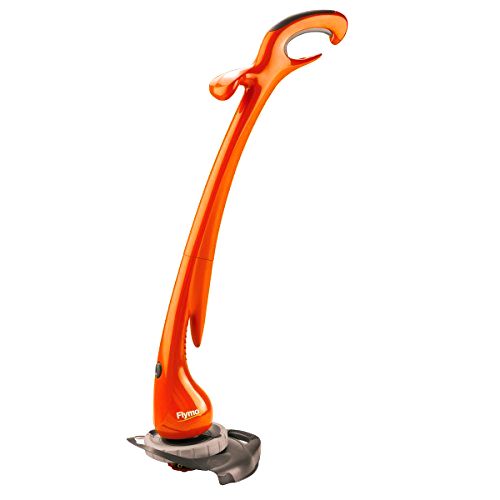
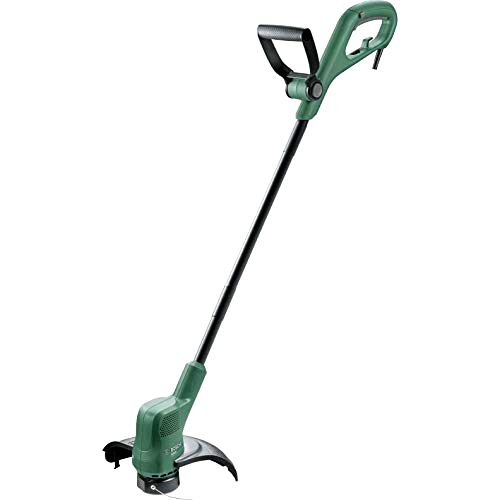
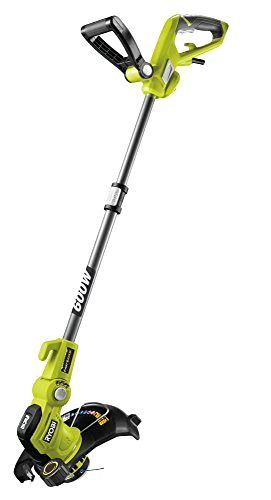
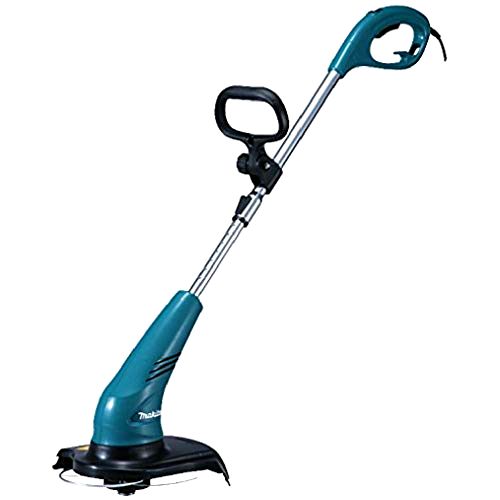
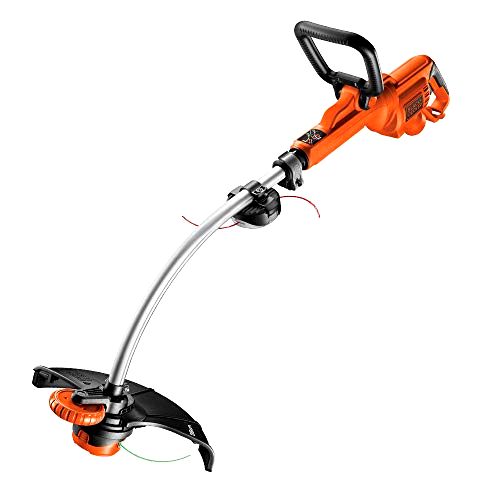

Share